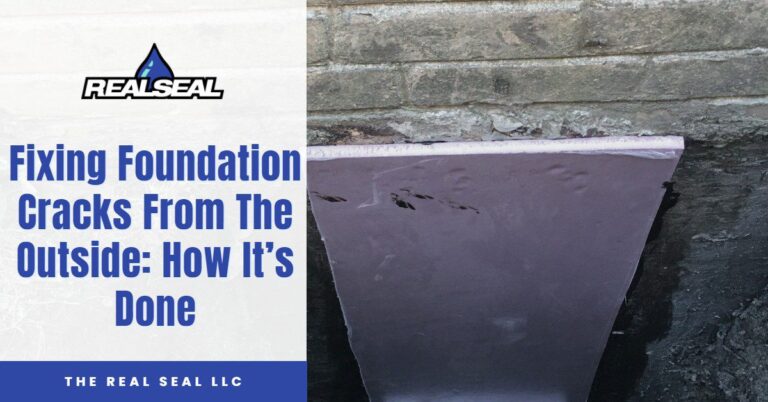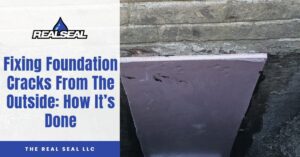If you want to know more about fixing foundation cracks from the outside, you’re in the right place. In this article, you’re going to learn what causes foundation cracks, the different types of foundation cracks, how experts fix them from the outside, and why it’s better to fix them from the inside.
What Causes Foundation Cracks?
The two main types of foundation cracks include structural cracks and non-structural cracks.
Structural cracks – A structural crack is a foundation crack that threatens the structural integrity of your home. They are caused by a few different things, including:
- Differential settlement – After a home is first built, it will slightly settle into the soil beneath it in a process called uniform settlement. This settlement is very small, occurring naturally and evenly. Differential settlement is when parts of your home settle at very different rates. This type of settlement can cause bowing walls, sloping floors, and foundation cracks.
- Hydrostatic pressure – If you don’t have a drainage system to collect gathering water, moisture can build up around your foundation. This build-up exerts pressure on your walls and can cause them to crack.
- Expansive soil – If the soil around your foundation walls contains a lot of clay, it’s considered “expansive.” This type of soil will grow when it absorbs water and shrinks when it dries. As the soil swells, it pushes on your foundation walls, causing them to crack. Then when the soil shrinks, it allows your wall to move back outward. This movement will cause your foundation walls to crack, possibly allowing them to open and close during different weather conditions.
- Frost-heave – When soil freezes, two things can happen. One, the soil can lift up and take pressure off your walls. Then when the soil thaws, it will settle back down. Two, the soil’s volume can increase and push against your walls. Both of these movements can cause your foundation walls to crack.
- Lateral pressure – When heavy objects are placed on the soil outside your foundation walls, that excess weight can push down on your dirt, pressing against your walls. All that pressure can cause your foundation walls to crack.
Other causes of structural cracks include:
- Voids forming under your foundation.
- Soil that can’t properly support a foundation.
- Inadequately compacted soil.
- Improper grading that allows water to pool near your foundation.
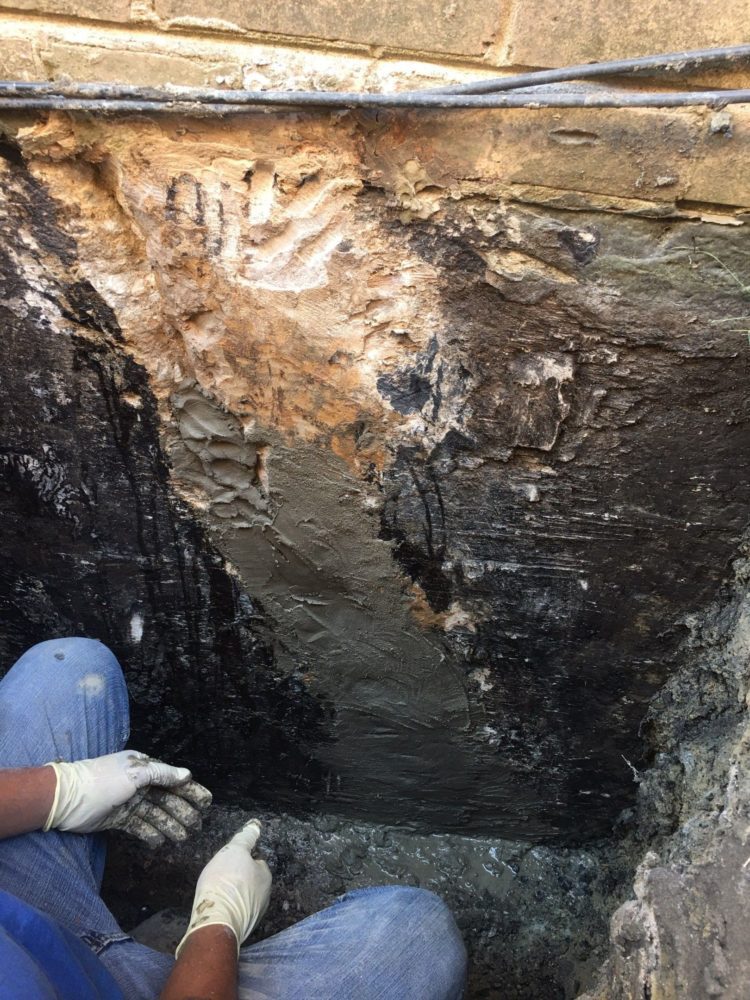
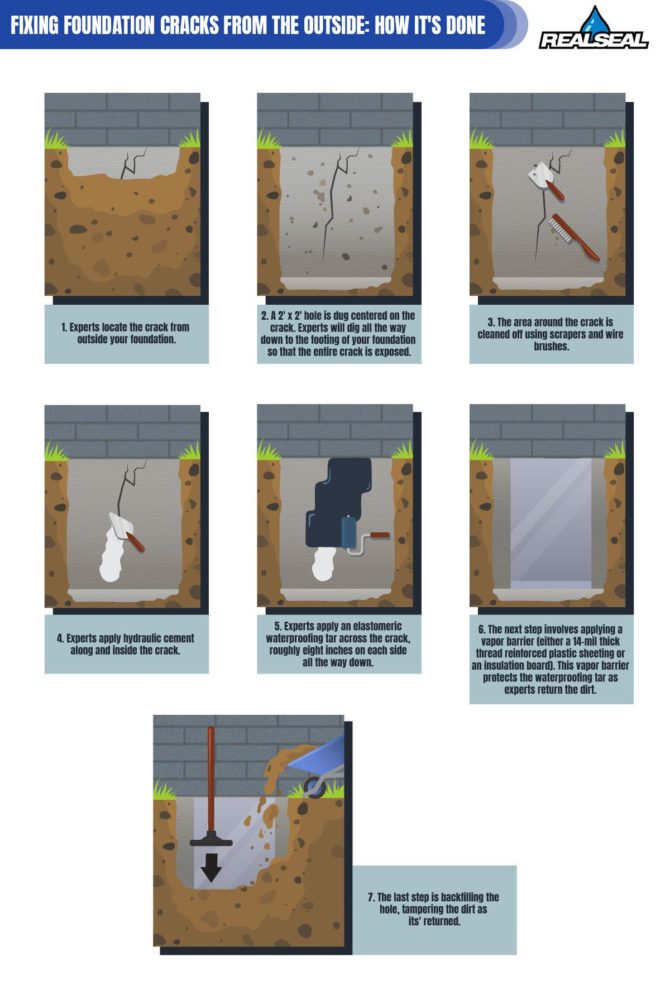
Non-structural cracks – Non-structural cracks, also called “waterproofing cracks,” are foundation cracks that don’t pose a threat to your home’s structural integrity. These cracks are usually found below I-beams, around windows, and in the corners of your walls. They are caused by two things:
- Aging – Some foundation cracks can form due to natural aging. But these types of cracks are usually smaller than 1/10 of an inch wide. If you notice these cracks are growing larger, it’s time to call a professional.
- Concrete shrinkage – When a poured foundation wall dries too quickly, thin hairline cracks can form.
Fixing Foundation Cracks From The Outside: How It’s Done
In the case where professionals can’t access your foundation walls from the inside, or you have drywall that you don’t want to be removed, experts can fix foundation cracks from the outside. Here’s how it’s done.
- Experts locate the crack from outside your foundation and mark off the area.
- A 2′ x 2′ hole is dug centered on the crack. Experts will dig all the way down to the footing of your foundation so that the entire crack is exposed.
- The area around the crack is cleaned off using scrapers and wire brushes.
- Experts apply hydraulic cement along and inside the crack.
- Experts apply an elastomeric waterproofing tar across the crack, roughly eight inches on each side all the way down.
- The next step involves applying a vapor barrier (either a 14-mil thick thread reinforced plastic sheeting or an insulation board). This vapor barrier protects the waterproofing tar as experts return the dirt.
- The last step is backfilling the hole, tampering the dirt as it’s returned.
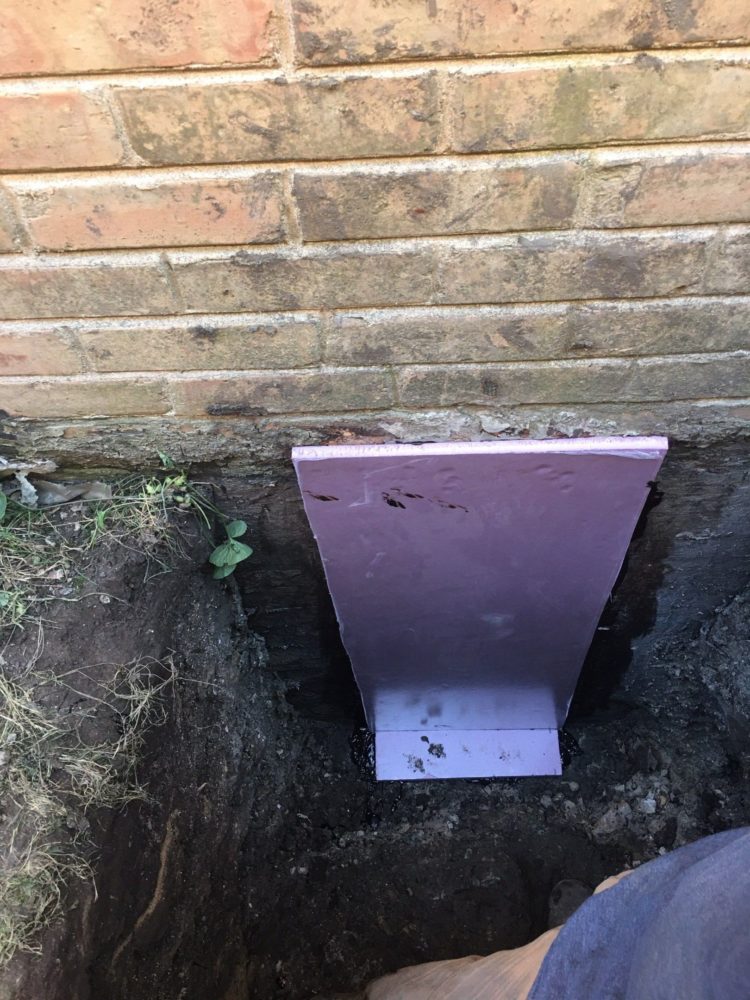
Why It’s Better To Fix Foundation Cracks From The Inside
Usually, foundation cracks are filled and repaired using carbon fiber staples and a 2-part epoxy injection. From the outside, experts still have a solution. Unfortunately, the process still has downsides. Inside work does not require any digging, making outside work harder and more involved. This will cause the overall repair cost to increase.
Some companies will dig and place bentonite (absorbent swelling clay) into the hole. This process does not guarantee that the entire crack is sealed, and most cracks will continue to leak over time. Overall, fixing foundation cracks from the outside requires reliable, professional foundation repair experts. So who can you trust?
Who’s Fixing Foundation Cracks From The Outside Near Me?
If you live in the Greater Chicago area, call The Real Seal. When you call us, you’ll receive an in-depth inspection of the foundation cracks you should be concerned about, a free repair estimate, and a list of our best solutions. We also offer basement waterproofing, crawl space encapsulation, crawl space repair, concrete leveling, and more. Don’t let foundation cracks stay long. Otherwise, they can grow and get worse. Call today!
